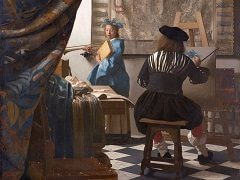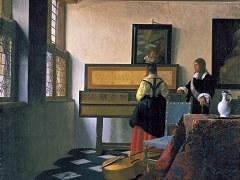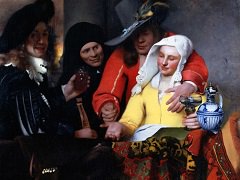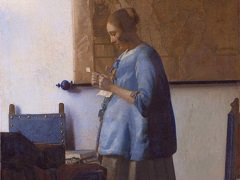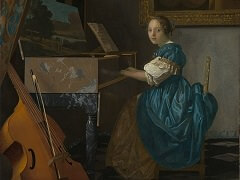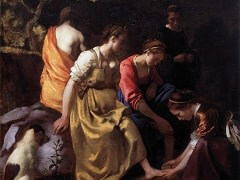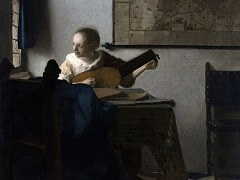The Concert, 1664 by Johannes Vermeer
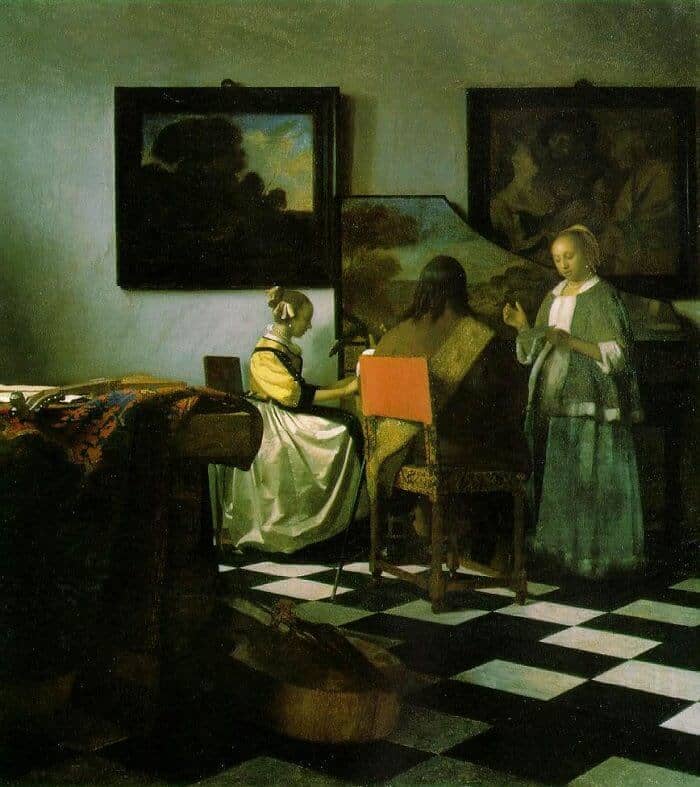
The Concert and The Music Lesson are two paintings that point out the difficulties of interpreting precisely the meanings of Vermeer's works. The theme of music is a frequent one in Dutch
art and is generally associated with love and seduction. Paintings by Steen, Van Mieris, and Metsu often include a small statue of Cupid surmounting a door or mantelpiece as a reference to the underlying emotional context of the
scene. Associations with love and seduction are also evident in the general attitudes or the figures in these paintings. The music instructor frequently appears more than professionally interested in his student and her progress
as a musician.
Vermeer, however, did not provide such clear meanings for his paintings. His choices of objects offered tantalizing suggestions, but the attitudes of his figures remain surprisingly neutral. In the background on the right of
The Concert, for example, hangs The Procuress by Baburen. The subject of this scene has often been thought to indicate the nature of the relationship of the three figures involved in the concert before it. These figures,
however, are earnestly concentrating on their music, and do not, in themselves, reinforce the licentious nature of the scene portrayed on the wall.
If we assume that Vermeer intentionally placed The Procuress and the landscape to its left on the wall, how are we to interpret this scene? One solution could be that the figures were meant to be in contrast to the paintings
rather than to represent, as it were, a tableau vivant, music was also used as a symbol for harmony and as a salve for the soul. With such an interpretation, we note also that the landscape on the clavecin is peaceful and Arcadian
whereas that on the wall is rugged, in the manner of Jacob van Ruisdael. It includes a dead tree trunk, a motif Ruisdael was fond of using to indicate death and decay.
In this sense the theme of The Concert parallels that of The Music Lesson more closely than one might expect. One may rightly question the appropriateness of the title of The Music Lesson. The gentleman, who is very
properly dressed, seems more intent on listening than on instructing. No written music is evident in the formal and spacious interior. As in The Concert, the theme seems to be the mollifying effects of music on the human
soul. By placing the girl so that her back is to us, Vermeer effectively underplayed the importance of her personality and of any relationship between her and the man, allowing us to ponder the significance of music in our lives.
The similarities between The Concert and The Music Lesson are such that they have often been dated at the same time. Both the conception of the scene and the painting techniques of The Concert, however, place
it around 1665-66, sometime after the conception of The Music Lesson. The mood of The Concert is more relaxed than that of The Music Lesson. The figures seem to belong naturally to the room and to participate
in the rhythm of the music. The case in their demeanor probably resulted from Vermeer's experiences in depicting the series of single figures during the years 1662 to 1665.
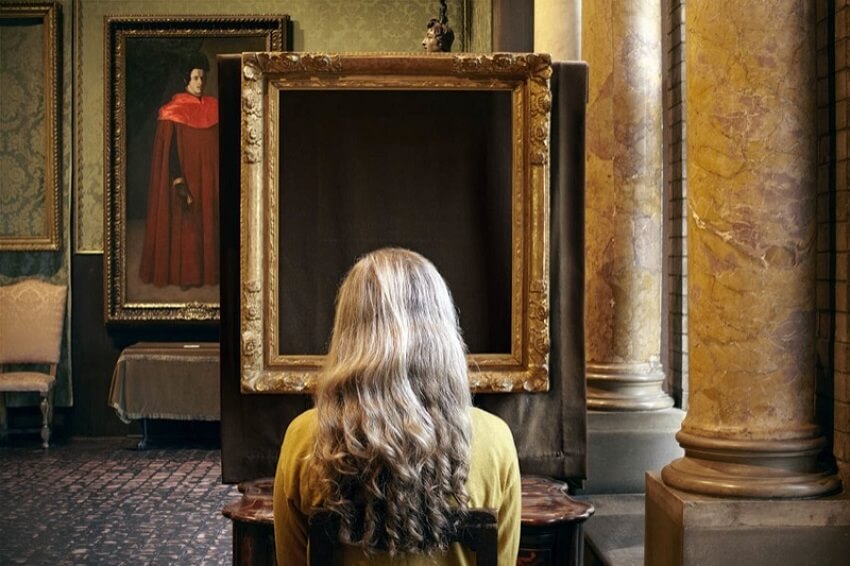
The Conert was previously in the Isabella Stewart Gardner Museum in Boston. Early in the morning of March 18, 1990, two thieves disguised as police officers robbed the museum of thirteen works worth some $500 million - the greatest known property theft in history. Among the works was The Conert. Also missing is The Storm on the Sea of Galilee, only known seascape by Rembrandt. The museum still displays the paintings' empty frames in their original locations, and the heist remains unsolved.


